Is your St Augustine grass turning yellow? Read this article to find out the reasons and how you can fix them.
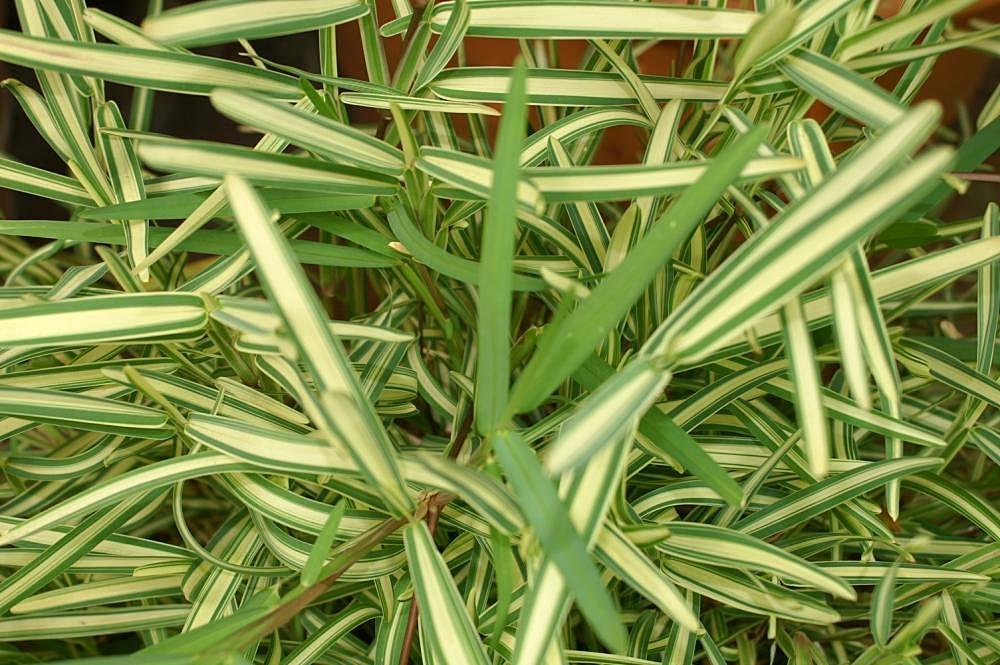
St. Augustine grass is a coarse-textured, spreading grass popular in warm-season areas.
St. Augustine grass, with its dark green color and large, flat leaves, makes a lovely lawn. Its adaptability and resistance to high temperatures make it an excellent choice as a lawn grass in the southern parts of the country. It is a hardy grass that can survive and even grow in various conditions where many of its counterparts fail to establish themselves.
However, despite its hardiness, St. Augustine grass is not invincible. For instance, some situations might cause your St. Augustine grass to turn yellow.
St. Augustine grass may turn yellow for several reasons, some of which include: fungal infections that result in grass losing its color or developing yellow patches, excess nitrogen or nitrogen deficiency, heavy rain or watering, an iron deficiency caused by high phosphorus levels or high pH, and scorching temperature.
Most of the time, more than one of these factors combine to give St. Augustine grass its sickly and pale look. So, if your St. Augustine grass is turning yellow, this article is for you!
Reasons Why St. Augustine Grass Turns Yellow
Chlorosis is a common problem in St. Augustine lawns during summer because of the higher temperatures.
Chlorosis is the lack of chlorophyll due to a deficiency of essential nutrients such as nitrogen and iron. Even if the nutrients are present in the soil, it may be difficult for grass to take them up in case of higher soil temperature and pH.
In addition, the problem is exacerbated by factors such as soil compaction and poor soil health.
Therefore, when you see that the St. Augustine grass on your property has begun to take on a yellow hue, you will need to investigate the potential causes and take action to mitigate the problems. Continue reading to learn more!
High Temperature
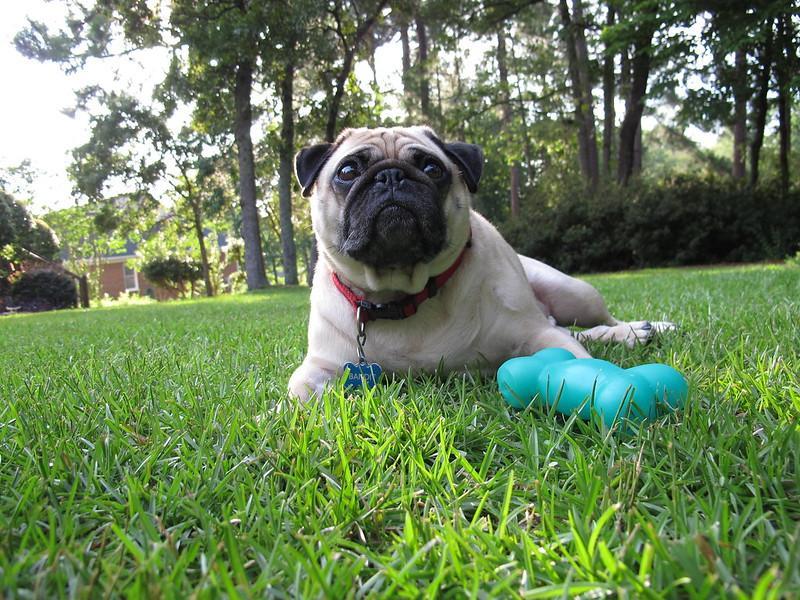
Extremes in the air and the soil’s temperature can harm grass to varying degrees.
St. Augustine grass is a beautiful warm-climate grass since it does best in full sun with more than eight hours of direct sunlight. Temperatures between 60 and 80 degrees Fahrenheit are ideal for its growth and spread.
Temperatures beyond this, however, prevent the grass from absorbing necessary nutrients such as nitrogen and iron.
The chlorophyll that gives grass blades their green color is lost when this occurs. Without chlorophyll, grass blades turn yellow (chlorosis).
Additionally, the grass withers when the temperature rises beyond 80 degrees Fahrenheit because it loses moisture more quickly than its roots can replace it.
Solution
Try adding trees and plants to the area surrounding your St. Augustine lawn to address this problem. In summer, they will reduce the heat and aid in keeping the grass cool.
Another solution is to use mulch, which can help retain water in the soil. It is particularly beneficial for St. Augustine grass due to its shallow roots. Likewise, make sure to water your St. Augustine grass during the summer adequately.
Also, keep your grass between 3 and 5 inches tall when mowing it during the exceptionally hot and dry summer.
RELATED: How To Make St. Augustine Grass Grow Thick & Spread Fast | Tips From Experts
Improper Watering
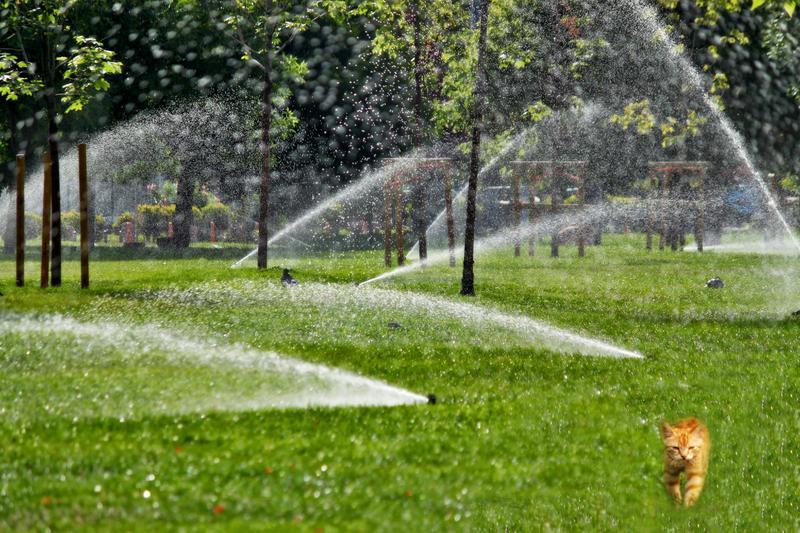
Too much of a good thing can be harmful, including watering your grass.
Does the St. Augustine grass on your lawn turn yellow in the spring? Heavy rains are usually to blame for this. Too much rain depletes the soil of critical elements such as nitrogen, resulting in chlorosis. In addition, your yard may occasionally become flooded due to heavy rain. Waterlogged soil also prevents St. Augustine grass from absorbing critical nutrients. Thinning, color loss and yellowing are a few signs of waterlogged lawns.
Infections and diseases can also spread more quickly to other areas of your lawn when it rains heavily or when it is overwatered. However, just as too much water is bad for the St. Augustin grass, so is too little water. During the spring and summer, St. Augustine grass needs the soil to be consistently moist. The grass wilts and becomes yellow quite quickly during drought, especially during the first year.
Control
Healthy St. Augustine grass typically requires one inch of water each week. Therefore, be sure to follow a proper watering schedule and refrain from overwatering your lawn. Additionally, make sure your yard has sufficient drainage.
Good drainage does, however, mean a greater propensity for leaching. The problem can be easily mitigated by using slow-release or water-insoluble fertilizers.
Nitrogen Deficiency

Nitrogen is regarded as the most significant component in promoting grass growth.
The most typical nutrient deficiency seen in turfgrass is a deficiency of nitrogen. Similar to all plants, lawn grasses require nitrogen for healthy growth.
Turfgrass with insufficient nitrogen becomes yellow and loses its vigor. Leaching is among the major contributors to soil nitrogen deficiency. It is more common during prolonged periods of heavy rainfall and in sandy soils.
Even if your soil contains a lot of nitrogen, your St. Augustine grass might not be able to absorb it as a result of several soil issues.
Solution
To address the issue of nitrogen deficiency in your lawn, use a high-nitrogen lawn fertilizer. However, it may take several sprays before the grass revives and returns to its natural colors. If your region receives too much rain, you can reduce nutrient leaching using a water-insoluble or slow-release nitrogen fertilizer.
RELATED: Dethatching St. Augustine Grass: A Complete Step By Step Guide
Too Much Nitrogen
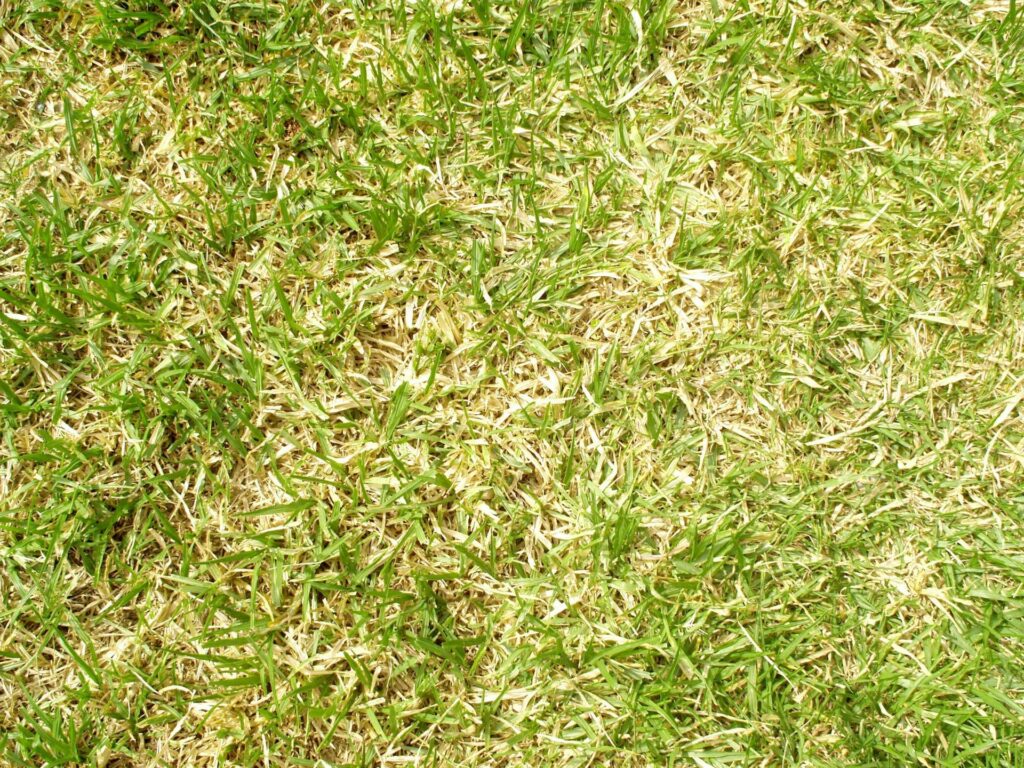
While deficiency of nitrogen can harm your grass, so does its excess.
Two things—over-fertilizing and dog urine can add too much nitrogen to your lawn. Nitrogen promotes the growth of green, leafy plants and is a crucial component for thick, healthy grass. However, too much nitrogen can result in soil pH changes that cause yellowing of the grass and chemical burns to the grassroots.
Burnt tips on the grass are one of the most prevalent indicators of too much nitrogen. You may need to lower the nitrogen levels if your lawn was healthy and green a few days ago but has since developed burnt-looking tips or dead patches.
Solution
You may want to follow the dog into the yard and apply a nitrogen neutralizer immediately to save your grass from becoming yellow and dying after the pet pees on it.
Adding organic material to your lawn, such as peat moss or compost, is another option.
It removes nitrogen from the soil and slowly releases it over time, lowering the total nitrogen concentration.
RELATED: How to Manage St. Augustine Grass Runners: A Comprehensive Guide
St. Augustine Grass Bugs
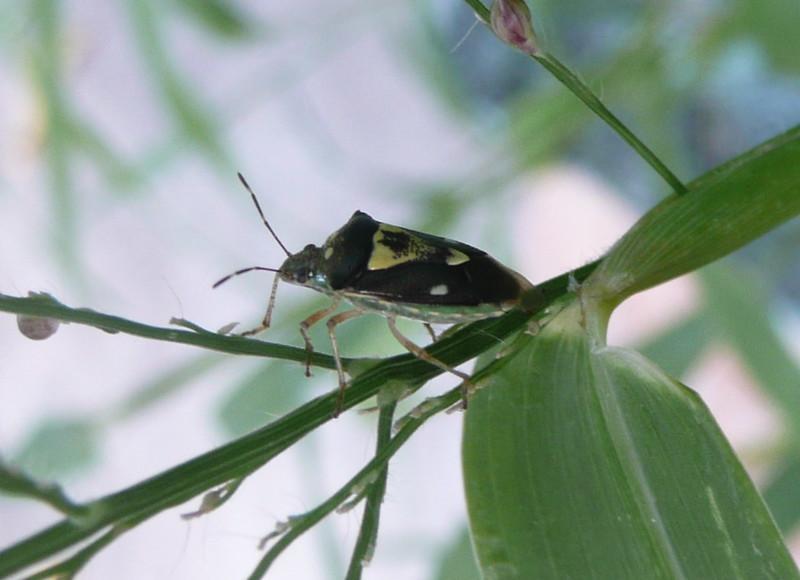
The telltale sign of chinch bugs is an increasing, irregular yellow patch of grass on your lawn.
Chinch bugs are by far the most harmful of all the pests that attack St. Augustine grass. However, these pests are not satisfied with merely consuming the grass’s leaves and stems.
In addition to feeding on the grass, they inject it with toxins, which causes the leaves to wither and lose color. Another indication of an insect infestation is midday wilting of St. Augustine grass, even when the soil is wet.
To identify if insects are causing your lawn’s issues, search for multiple symptoms, such as discolored patches that have not been treated with herbicides recently.
Solution
Use a vertical mower to eliminate thatch and apply a chinch bug spray to eliminate these troublesome pests. Products containing carbaryl or pyrethroid pesticides effectively control and kill chinch bugs.
Fungal Diseases
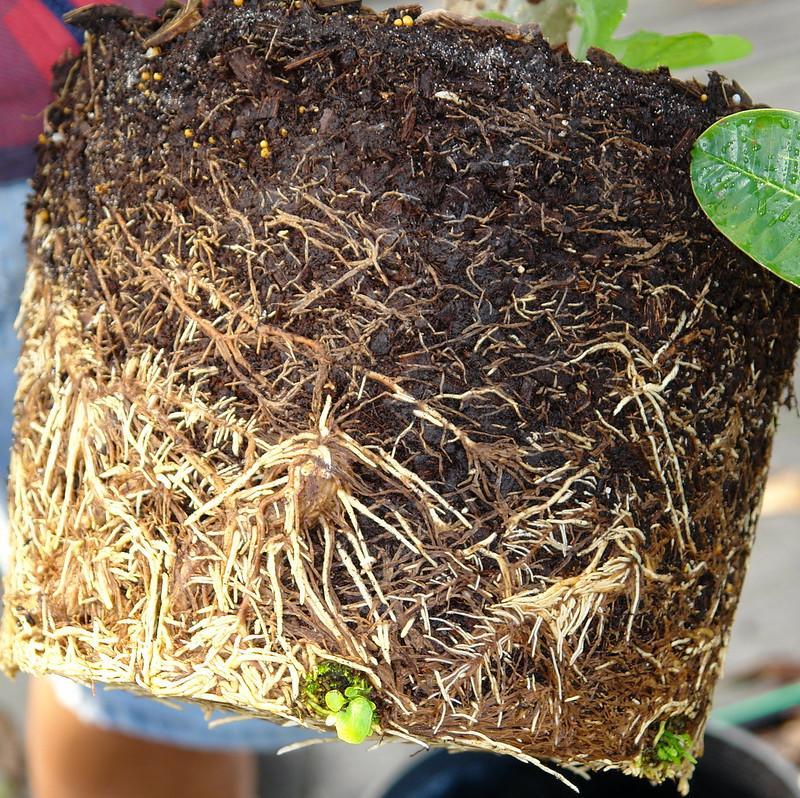
Root rot is a fungal disease that causes turfgrass to become weak, brown, and lifeless.
Another reason why St. Augustine grass commonly develops yellow patches is fungal diseases. St. Augustine grass is vulnerable to many fungal infections, including downy mildew, gray leaf spot disease, and root rot.
Infections are more likely to spread in warm, humid weather, especially after rain. If these fungal infections are not treated and kept under control, your grass may die and become thin. Root rot is one example of St. Augustine grass fungal diseases.
You may have root rot if you notice yellow rings on your grass in the spring or summer.
Control
Check for decaying leaf sheaths and see whether the browned blades can be easily pulled free with a light tug to identify a fungal disease.
Dig out the infected patches and expose the ground to the sun prior to reseeding the area. In severe instances, you may need to spray a fungicide over the lawn’s affected regions.
In the case of root rot, Myclobutanil and Azoxystrobin work wonders.
Iron Deficiency

Iron contributes to leaf color enhancement and grass strength, making your lawn greener.
In calcareous soils, iron chlorosis is caused by a shortage of readily available iron, although it can also be caused by excessive bicarbonate and phosphate levels in the soil. This lack of iron or excess of bicarbonate and phosphate prevents the development of green chlorophyll in plant tissue, resulting in yellow grass blades.
It is simple to confuse the symptoms of iron chlorosis with a nitrogen deficiency, both of which cause yellowing grass. Also, each needs a particular treatment. Therefore, it’s imperative that you identify the issue. While nitrogen deficiency first affects the older grass blades, iron chlorosis starts in your turf’s newest growth.
Solution
An iron deficiency may not always indicate a shortage of iron in the lawn soil but rather the inability of grass to absorb iron. Therefore, you will need to have a soil test done before you can fix the issue. It will reveal the main problem. Add an iron supplement to your grass if there is an iron shortage. However, if it is high pH or increased phosphorus, both of which reduce iron uptake, you will have to treat them first.
Final Thoughts
St. Augustine grass creates a lush green turf on your lawn. You must, however, adhere to a regular fertilizing and watering schedule if you want to keep it lush and green. Don’t be alarmed if you see that your St. Augustine grass is turning yellow.
There are several potential causes for that. However, if you follow the instructions mentioned above, the yellow St Augustine grass will turn green.
Frequently Asked Questions (FAQs)
How do you revive St. Augustine grass?
The best way to revive St. Augustine grass is to water your lawn about 1 to 1.5 inches per week. In addition, add the right nutrients to the soil and generally maintain a healthy soil environment with the appropriate pH, aeration, and dethatching the lawn.
What is killing my St. Augustine grass?
A possible cause of St. Augustine grass death is the low quality of the soil in which it grows. In addition, the death of your St. Augustine grass could be brought on by the effects of drought stress, fertilizer burn, dormancy, or damage from grubs.
How do I know if my St. Augustine grass has a fungus?
St. Augustine grass is prone to many fungal diseases with varying signs and symptoms. However, if you see that the stolons of your grass are turning brown or your turf is developing yellow or brown patches, you most likely have a fungal infection.
Does St. Augustine turn yellow in winter?
Since St. Augustine grass is a warm-season grass, it will naturally go dormant and turn yellow or pale brown in the winters. However, it is not the only reason why this could happen. Drought stress, fungal attacks, and nutrient deficiency can also turn your grass yellow.
Will yellow St. Augustine grass grow back?
If the yellow St. Augustine grass is not truly dead, providing it with adequate fertilization, water, and proper conditions might help it grow back. However, if St. Augustine grass is genuinely dead, there is no reviving it, no matter what you do.
Sources For Further Reading
What is Ailing My St. Augustine Grass? – University of Florida Extension Service
St. Augustinegrass Yearly Maintenance Program – Clemson University Cooperative Extension Service
Take-All Root Rot on St. Augustine grass – Alabama A&M University Cooperative Extension System
Editor’s Recommendations
Can I Mow Right After Aerating? | Mistakes That You Should Avoid!







